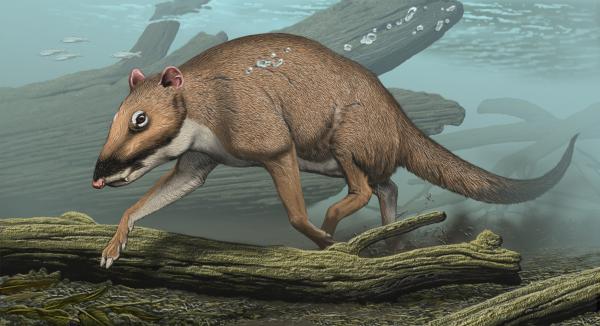 SCIENCE DAILY– Hans Thewissen, Ph.D., Professor of the Department of Anatomy, Northeastern Ohio Universities Colleges of Medicine and Pharmacy (NEOUCOM), has announced the discovery of the missing link between whales and their four-footed ancestors.
SCIENCE DAILY– Hans Thewissen, Ph.D., Professor of the Department of Anatomy, Northeastern Ohio Universities Colleges of Medicine and Pharmacy (NEOUCOM), has announced the discovery of the missing link between whales and their four-footed ancestors.
Scientists since Darwin have known that whales are mammals whose ancestors walked on land, and in the past 15 years, researchers led by Dr. Thewissen have identified a series of intermediate fossils documenting whale’s dramatic evolutionary transition from land to sea. But one step was missing: The identity of the land ancestors of whales.
Now Dr. Thewissen and colleagues discovered of the skeleton of Indohyus, an approximately 48-million-year-old even-toed ungulate from the Kashmir region of India, as the closest known fossil relative of whales. Dr. Thewissen’s team studied a layer of mudstone with hundreds of bones of Indohyus, a fox-sized mammal that looked something like a miniature deer.
Dr. Thewissen and colleagues report key similarities between whales and Indohyus in the skull and ear that show their close family relationship.
Thewissen and colleagues also explored how Indohyus lived, and came up with some surprising results. They determined that the bones of the skeleton of Indohyus had a thick outside layer, much thicker than in other mammals of this size. This characteristic is often seen in mammals that are slow aquatic waders, such as the hippopotamus today. Indohyus’ aquatic habits are further confirmed by the chemical composition of their teeth, which revealed oxygen isotope ratios similar to those of aquatic animals. All this implies that Indohyus spent much of its time in water.
Dr. Walt Horton, Vice-President for Research at NEOUCOM commented: “This remarkable research demonstrates that the study of the structure and composition of fossil bones can tell us about how the skeleton of whales and, by extension, other mammals like humans, interacts with the environment and changes over time.”
Read the full article on Whales Descended From Tiny Deer-Like Ancestors.
© 2011 Science Daily
Photo courtesy of Northeastern Ohio Universities Colleges of Medicine and Pharmacy










